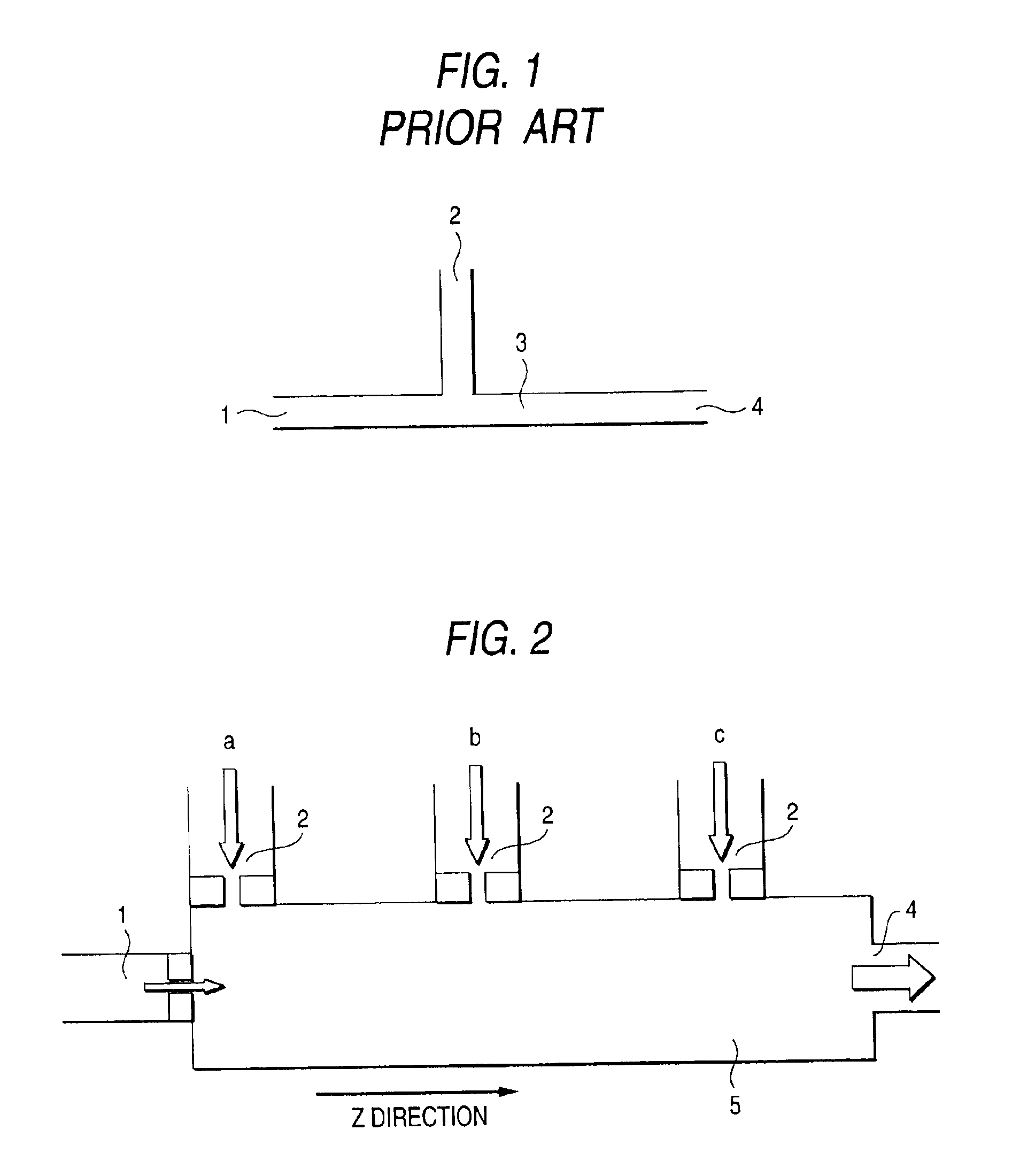Process of producing silver halide photographic emulsions
a technology of silver halide and photographic emulsion, which is applied in the direction of diazo-type processes, photosensitive materials, instruments, etc., can solve the problems of lowering the light-receiving efficiency, difficult to form monodispersed nuclei, and polydispersed grain size, so as to reduce the load on the manufacture, slow down the jet flow, and high mixing efficiency
- Summary
- Abstract
- Description
- Claims
- Application Information
AI Technical Summary
Benefits of technology
Problems solved by technology
Method used
Image
Examples
experiment 1
(Preparation of Fine Grain Emulsions a, b and c)
An aqueous solution (first solution) prepared by dissolving 480 g of AgNO3 in water to make 3,000 mL and an aqueous solution (second solution) prepared by dissolving an equimolar amount of KBr and 288 g of oxidized gelatin having a low molecular weight as 15,000 in water to make 3,000 mL were introduced into a mixer as shown in FIG. 2, to prepare a fine grain emulsion. Introduction port 2 was provided at position a, b or c schematically shown in FIG. 2. The first solution set up at 24° C. was introduced as a jet flow into a slowing-down region 5 from an introduction port 1 as shown in FIG. 2. At the time when the jet flow came into the slowing-down region, its flow velocity in the Z direction was set up at 360 m / sec. The inner diameter of the introduction port 1 is 0.13 mm. The second solution set up at 20° C. was introduced from the introduction port 2. The inner diameter of the introduction port 2 was 1.3 mm, and the introduction vel...
experiment 2
(Preparation of Fine Grain Emulsions d, e and f)
Emulsions d, e and f were prepared in the same manner as in Experiment 1, except that the velocity of the jet flow (first solution) to be introduced from the introduction port 1 into the slowing-down region was changed to 36 m / sec and that the velocity of the second solution to be introduced from the introduction port 2 was changed to 0.36 m / sec. Thereafter, the same analysis as in Experiment 1 was carried out. As a result, the Z component of the jet flow velocity in the position (Z coordinate) of the introduction port a, b or c was 29 m / sec at the position of the introduction port a, 4.5 m / sec at the position of the introduction port b and 0.3 m / sec at the position of the introduction port c, respectively. The results of observation of the shape of the grains contained in the emulsions by an electron microscope are shown in Table 2. Even in the case where the jet flow velocity is low, the effects of the invention can be achieved as is...
example 1
(Preparation of Tabular Emulsions g and h)
In a reactor were added 4.0 L of water, 20 g of oxidized bone gelatin having an average molecular weight of 20,000 (methionine content: 5 μmol / g) and 4 g of KBr to dissolve. To the solution kept at 35° C. in the reactor were added 80 mL of a 0.29 M aqueous silver nitrate solution and 80 mL of a 0.29 M aqueous KBr solution over a period of 40 seconds while stirring (nucleation).
The temperature was elevated from 35° C. to 75° C. over a period of 25 minutes, and the mixture was allowed to stand for 2 minutes. Thereafter, 600 mL of a 10 weight % bone gelatin solution, in which 95% of amino groups had been succinated, and KBr were added to adjust the pBr of the emulsion in the reactor at 2.7 (ripening).
Then, to the ripened emulsion was continuously added the emulsion d (or the comparative emulsion f) of Experiment 2 over a period of 60 minutes. After completion of the addition, the mixture was further ripened for 15 minutes, the temperature was l...
PUM
 Login to View More
Login to View More Abstract
Description
Claims
Application Information
 Login to View More
Login to View More - R&D
- Intellectual Property
- Life Sciences
- Materials
- Tech Scout
- Unparalleled Data Quality
- Higher Quality Content
- 60% Fewer Hallucinations
Browse by: Latest US Patents, China's latest patents, Technical Efficacy Thesaurus, Application Domain, Technology Topic, Popular Technical Reports.
© 2025 PatSnap. All rights reserved.Legal|Privacy policy|Modern Slavery Act Transparency Statement|Sitemap|About US| Contact US: help@patsnap.com

